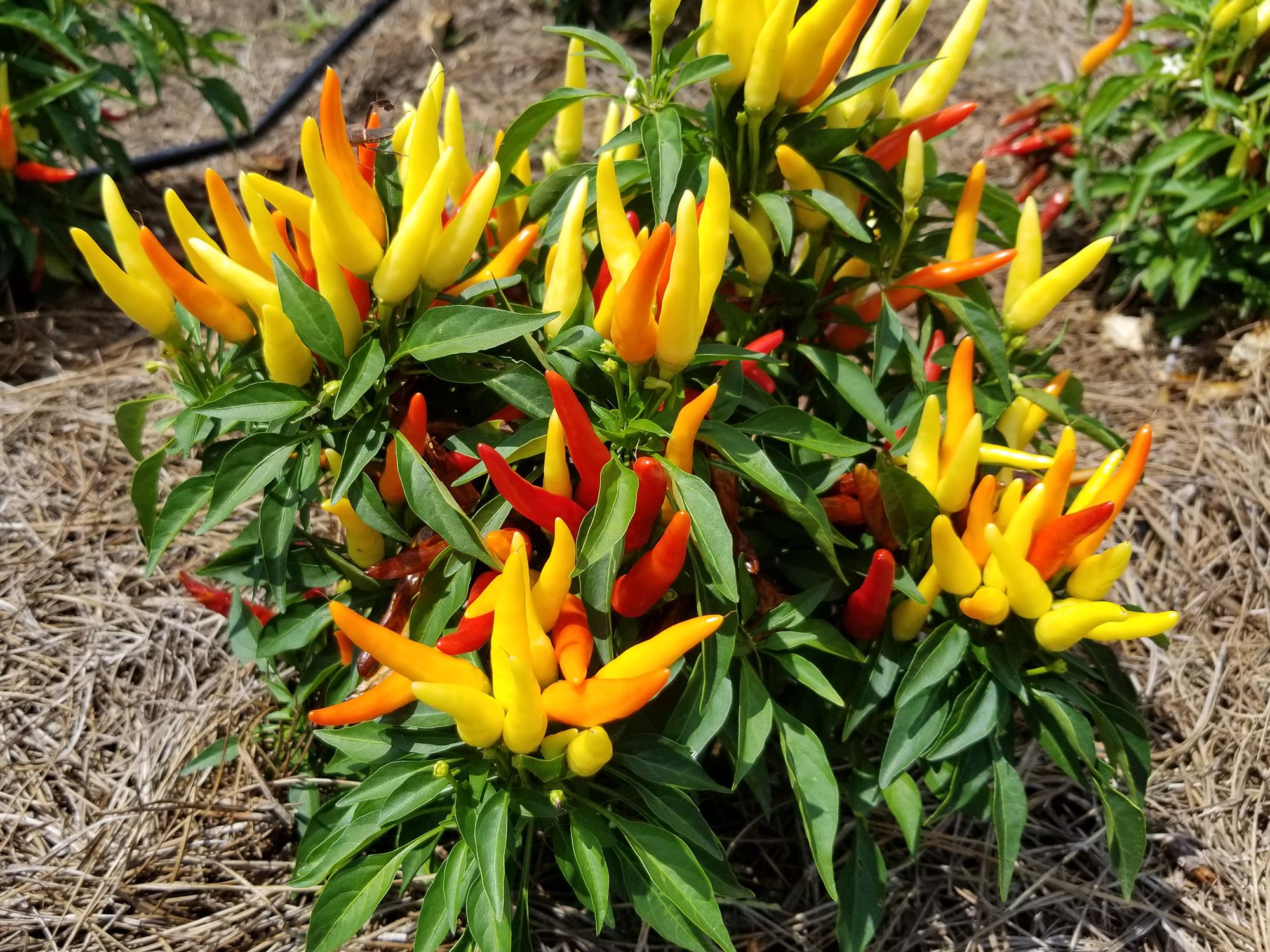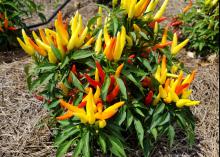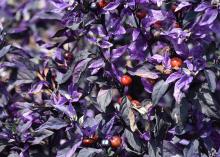Information Possibly Outdated
The information presented on this page was originally released on August 12, 2019. It may not be outdated, but please search our site for more current information. If you plan to quote or reference this information in a publication, please check with the Extension specialist or author before proceeding.
Ornamental peppers have versatility and value
The late summer garden and landscape in Mississippi can be a tough place. Extreme heat and humidity result in heat index numbers that keep me, like many other gardeners, indoors enjoying the air conditioning.
But, I can take solace in knowing that, while many of my flowering summer annuals are starting to succumb to the heat, my ornamental peppers will be growing strong. What a great selection for any later summer garden!
The best show is saved for late summer and lasts through fall as the plants keep producing. This means you should plant your ornamental peppers in late spring. You’ll appreciate a little garden planning. There are lots of different ornamental peppers available, but here are just a few of my current favorites.
Purple Flash, which was chosen as a Mississippi Medallion winner for 2010, is an example of the versatility and value of ornamental peppers. With its purple-and-white variegated leaves, it is one of the showiest peppers available on the market.
Chilly Chili seems to explode in a dramatically colorful demonstration. This 2002 All-America Selections winner holds the fruit above the foliage. The fruit starts as yellow-green and transitions to a bright orange and brilliant red. Chilly Chili, a great choice for container planting, grows to about 1 foot tall and wide. This plant will tolerate our hot and humid Mississippi summers and have great color when other plants are fading. The peppers are not hot and are probably the safest to grow around curious children.
The ornamental pepper variety Sangria holds its slender fruit pointing upward boastfully as if getting ready for a party. This pretty ornamental pepper bears fruit in almost unbelievable numbers that resemble confetti. Young fruit emerge greenish yellow and then march through a wonderful parade of colors: orange, lilac, purple and finally on to a glorious crimson red.
A new ornamental pepper variety, at least for me, is Midnight Fire. This plant has unique and distinctive dark-black foliage. It is accented by abundant, smallish, dark-purple fruit, which mature to bright red. The contrast between the foliage and the fruit is an eye-catching combination in any garden.
Ornamental peppers prefer to grow in consistently moist soil, but don’t be overly generous with the water because the plants don’t tolerate waterlogged soil. Fertilize with a good slow-release fertilizer early in the season. Once fruit starts to set, there is no need to add additional nutrition.
Whenever we use the word “ornamental” to describe any vegetable, many folks automatically assume the fruit is not to be eaten. Generally, this is true because the plants have been selectively bred for color. However, ornamental peppers can be used to spice up a dish, but just remember they tend to be very, very hot and not in a good culinary way.




